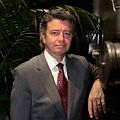Kus-kus-sum Restoration on Courtenay River on Vancouver Island: Historic Milestone in Reconciliation Makes History for Greener Planet

“K’ómoks First Nation believes in partnerships, particularly when partnerships involve like-minded groups that share similar vision. It is in this spirit that we are happy to sign this collaborative agreement with the City of Courtenay and Project Watershed on behalf of our membership for the management and restoration of Kus-kus-sum,” states Chief Councillor Nicole Rempel, K’ómoks First Nation. “Restoring this cultural and historically significant site is a vision KFN shares with Project Watershed and the City of Courtenay. KFN’s interest in the site is largely based on its strong cultural significance.”










